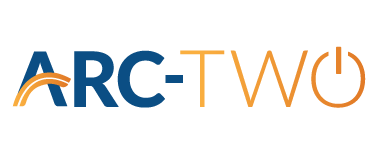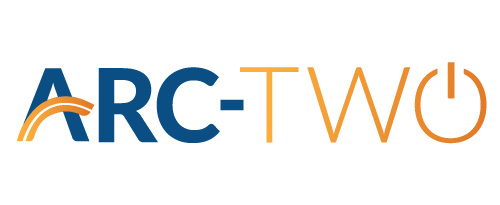
How Do You Differentiate Between Software Solutions?
Regulated utilities across the country are facing a new challenge they have not faced in a long time, how to evaluate and differentiate tax accounting software.
In light of this new environment, it’s an opportunity to step back, and ask several questions:
- What are our true business requirements when it comes to tax depreciation and deferred taxes?
- What differentiators are we looking to identify when evaluating our next solution?
- Are we sufficiently satisfied with our current tax solution(s)?
- Do the available solutions include more than tax?
- How will Year 1 cost compare against other solutions?
- How will Years 2 and beyond compare in the long-term?
- Will we be subjected to expensive upgrades?
- My team will experience attrition over the next several years, is the user experience such that new team members will easily learn the application?
- Will a younger generation feel they are using modern, innovative software?
The list of questions is nearly infinite.
While developing Arctek, the family of solutions for regulated utilities from Arc-Two, maximizing the differentiators was a key tenet in the ideation phase.
Satisfaction of Business Requirements
With historically one choice for regulated utility software, utilities have not had the opportunity to take a step back and review their business requirements with open eyes, untethered from an existing solution. Performing this exercise is a critical first step in any software evaluation.
Our team of experts, in both plant and tax accounting, completed the same exercise in our system design. We used decades of experience to reconceptualize many business requirements facing the industry. Each feature of the software endured vigorous dissection with two questions consistently at the fore front:
- What do users really need to perform their tasks efficiently and clearly?
- How can we set clients up for long-term success?
Beyond the Basics of Functionality
Every regulated utility across the US has table-stakes when it comes to business requirements. On the book side, the calculations and accounting from work order creation through asset depreciation and journal realization must be addressed. On the tax side, tax basis determination and the subsequent depreciation and deferred taxes must be calculated correctly and provide the resolution methods of both excess and deficient deferred taxes.
But what are the differentiators between products on the market?
- Is there a “black box” of calculations that can’t be proven out?
- How will the system perform after 5 or 10 years? 20 years?
- What are the modeling capabilities?
- Can users easily access all the data in the system?
- Are there helpful tools to enable user analysis?
These are but a sample of principles the industry veterans at Arc-Two considered when developing Arctek.
User Experience
One business requirement that doesn’t get much attention is the ease of succession training. Processes and dataflows throughout the Arctek platform were designed for new users to easily adopt. Days-long training for new users is a thing of the past.
With Wizard-driven processes and strong controls throughout the Arctek platform, users will never be confused on their next step or where they left off before being distracted by another day-job fire drill.
When using a platform of applications from the same vendor, consistency in user experience is of utmost importance. Arctekusers enjoy the same look, feel, and capabilities across the entire suite.
Full-Service Vendor Platform
Another key business requirement in today’s environment is having one coherent solution across the entire utility asset accounting lifecycle. A single solution that can provide these features enhances the user experience, increases the ability to fully audit/drill to upstream data, and provides a one stop shop for training, support, and integrations.
Therefore, it is important that any tax solution today can also offer upstream capability for work order accounting, book asset accounting, book depreciation, asset retirement obligation accounting and peripheral tax products, such as property tax and income tax accrual.
Arctek is the only modern, cloud-native solution provider that offers a complete platform of integrated solutions for the regulated utility industry.
Software for Today AND Tomorrow
While utilities are relieved to finally have a choice in the market for plant accounting and tax software, they are concerned about the effectiveness and impact of future updates. This concern stems from the legacy software model that includes high annual maintenance plans and high-cost, big-bang upgrades – even if they result in little other than end of life benefits.
Arc-Two has changed the future outlook with Arctek, as it was architected and built to support routine updates to the software, eliminating the costly and intrusive upgrade process – and our industry expertise allows us to effectively prioritize and deliver the enhancements utilities demand.
Vendor/Client Partnerships
Many of the differentiators listed so far have been more technical in nature and identifying what a system can or cannot do. However, it is just as important to evaluate the quality of partnership with the vendor.
Arc-Two’s philosophy is to create and nurture partnerships that are based on credibility, trust and transparency. For most US regulated utilities, the groundwork has already been laid, as the sum of the Arc-Two team has worked with plant, tax and IT personnel at almost every utility in the country.
As Arc-Two implements Arctek, clients will experience a brand-new approach to what a partnership with a software vendor can look like. It doesn’t end at go-live. It extends into perpetuity, from consistent check-ins and collaborative development of new system requirements to thought leadership when accounting and tax guidance have changes on the horizon.
Cost of Ownership
Historically, the license and maintenance model of software provisioning includes many costs that tend to lurk in the background.
When determining the current cost of ownership of an on-premise software application, the following line items should be considered:
- Current system annual maintenance
- Database license cost
- Database Maintenance (e.g. DBA cost)
- Hardware (Servers, storage, virtualization, etc.)
- Internal IT Hardware Maintenance Cost
- IT source control
- After-Hours/Support Cost
- Upgrade Costs (and associated hardware/database upgrades)
- Consulting fees to perform processes and tasks that are unable to be performed in the software.
When all tallied, these costs can be exorbitant in both dollars, as well as time.
Arc-Two has turned the historical user experience and support model on its head while also uniquely addressing many other costs of ownership. A cloud-native, modern platform, that when deployed, can save utilities precious time and money.
Reach out today to learn more details on the points this article has covered!


